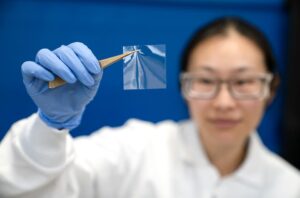Last month, I wrote a special report for Tecnon OrbiChem’s Bio-Materials newsletter about polyimide and polyphthalamide (PPA), which are considered high-temperature specialty polymers. I am not quite familiar with these polymers but apparently, they can now be produced using renewable feedstock.
Zymergen launched in December last year its Hyaline family of polyimide films and the fermentation-based version is expected to roll out next year for electronics application. Polyimides are high-temperature engineering polymers that exhibit an exceptional combination of thermal stability, mechanical toughness and chemical resistance. The classical method of polyimide synthesis is by reaction of a dianhydride and a diamine.
For polyphthalamide, a type of specialty aromatic polyamides, they are copolymers made from the condensation of aliphatic amides, such as caprolactam and HMDA, with terephthalic acid and/or isophthalic acid. If you’re following the renewable chemicals space, you would know that bio-based equivalents for terephthalic acid will soon be produced in commercial quantities from companies such as Origin Materials, Anellotech and other bio-based dicarboxylic acid producers. Genomatica is also working on the development of fermentation-based caprolactam and HMDA.
You can access for free this special report on Tecnon OrbiChem’s blog.





